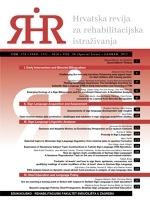Prosody in Sign Languages
Prosody in Sign Languages
Author(s): Ronnie B. WilburSubject(s): Language acquisition, Comparative Linguistics, Sociolinguistics
Published by: Sveučilište u Zagrebu, Edukacijsko-rehabilitacijski fakultet
Keywords: prosody; rhythmic phrasing; intonation; discourse management; stress marking; sign languages;
Summary/Abstract: This chapter addresses the debate concerning the status of nonmanuals (head, face, body) as prosodic or not by exploring in detail how prosody is structured in speech and what might be parallels and differences in sign. Prosody is divided into two parts, rhythmic phrasing (timing, syllables, stress), and intonation. To maximize accessibility, in each part, an introduction to what is known for speech is presented, followed by what is known and/or claimed for sign languages. With the exception of the internal structure of syllables, sign languages are very similar to spoken languages in the rhythmic domain. In the intonational domain, the parallels are less strong, in part because analogies of nonmanual functions to spoken intonation tend to be based on older/simpler models of intonation. There needs to be much more detailed research on sign languages to catch up with the recent research on spoken intonation.
Journal: Hrvatska revija za rehabilitacijska istraživanja
- Issue Year: 58/2022
- Issue No: Spec. Iss.
- Page Range: 143-174
- Page Count: 32
- Language: English

